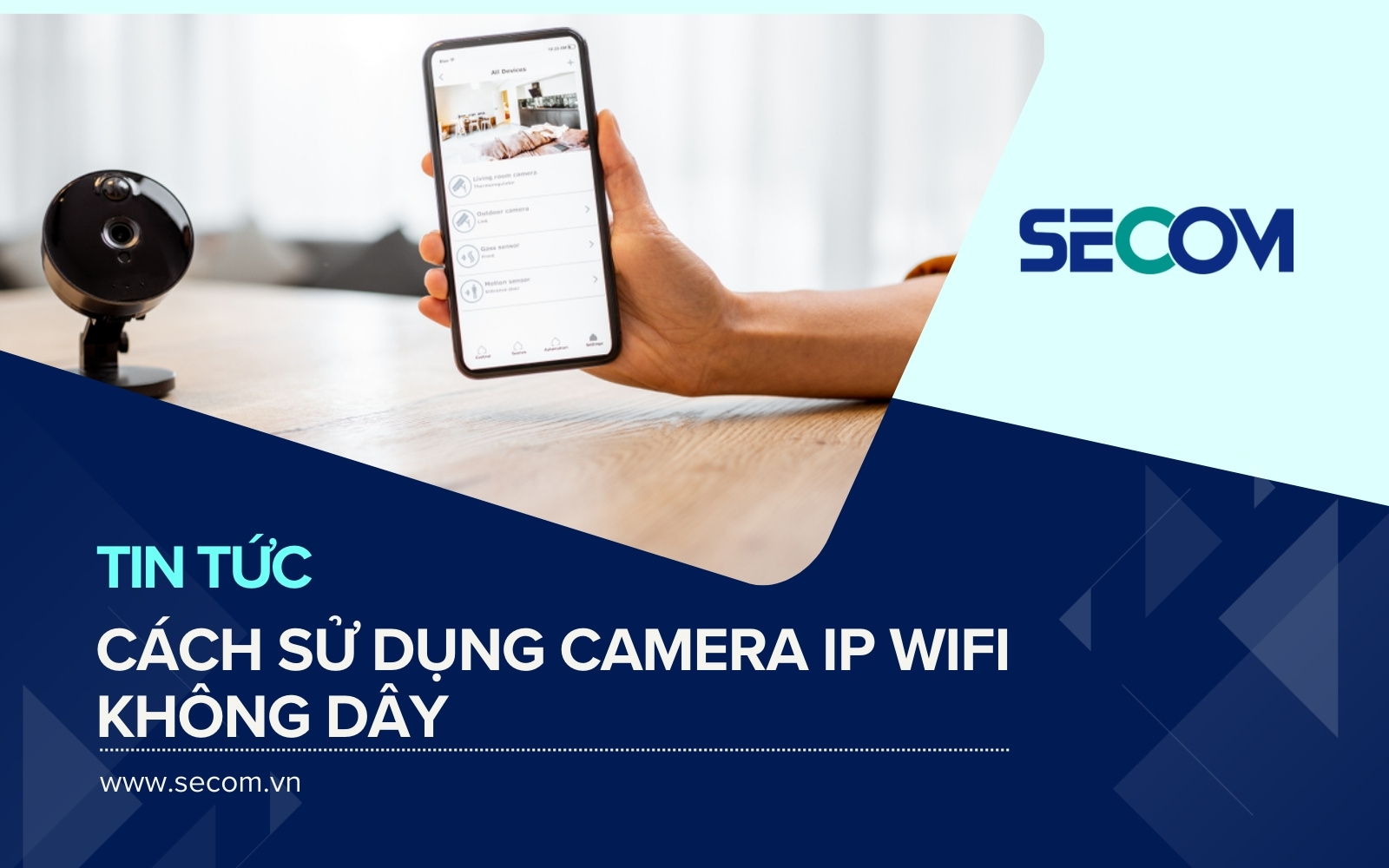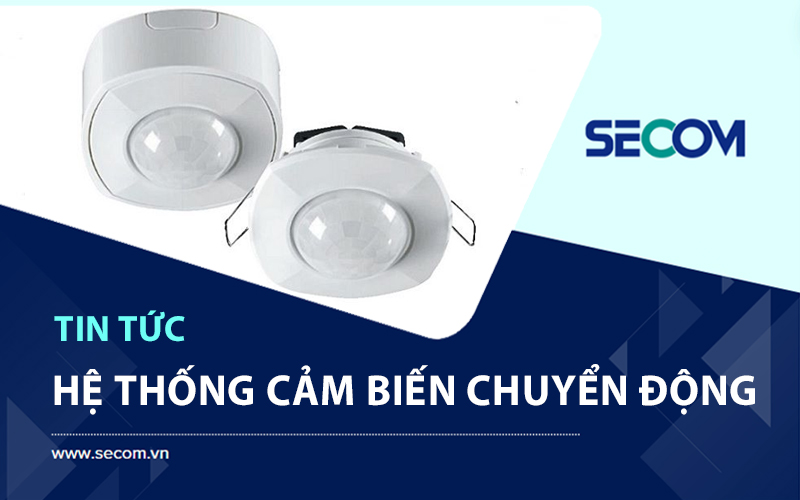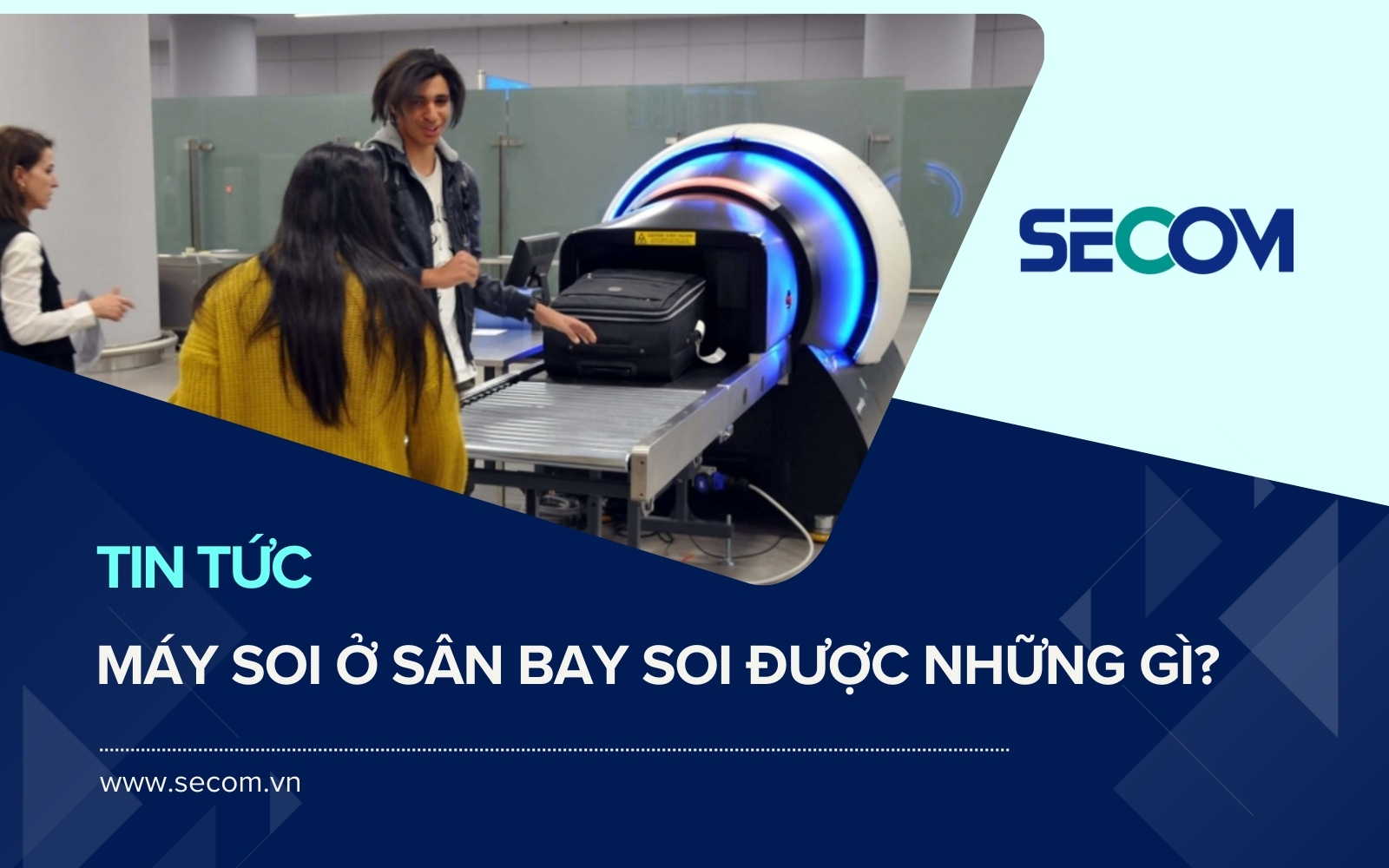- SECOM News
- Apr. 12, 2024
What Is The Timekeeping System? Popular Timekeeping Systems Today
It can be seen that timekeeping is a useful tool in managing employee activities accurately and effectively. Currently, on the market there are a variety of timekeeping machines from traditional to modern such as magnetic cards, fingerprints, facial recognition, etc. Accordingly, choosing a suitable timekeeping system will Helps businesses save costs and increase management efficiency. Understanding this, SECOM will synthesize and share information related to the timekeeping system to help individuals and businesses more conveniently use it.
Overview of the timekeeping system
Timekeeping is not only a basis for salary calculation, but also a means for businesses to evaluate the work performance and sense of responsibility of employees. Therefore, equipping a timekeeping system will help businesses save time and resources in managing human resources.
What is timekeeping?
“Mark” here can be understood as the activity of monitoring, recording and evaluating, “Credit” corresponds to the effort the employee puts in to complete the workload. Thus, timekeeping is a form of tracking and recording information related to the work schedule of employees at the company. Vietnamese businesses often calculate employee wages at two times: starting time and ending time.
What is the timekeeping system?
The timekeeping system is set up to perform tasks on behalf of timekeepers, helping businesses minimize all errors and increase efficiency in human resource management. By using this system, businesses can easily manage employees’ working hours, and moreover, salary calculation will become fairer and more transparent.
What are the benefits of using a timekeeping system?
Timekeeping devices are increasingly widely used thanks to the practical benefits and efficiency they bring. Below are some of the main benefits of using a time attendance system to help you better understand the importance of this system.
For Businesses
For businesses, timekeeping will help monitor the level of attendance, attitude, and responsibility of employees. Specifically, managers at all levels and human resources departments need to accurately capture employees’ workdays and working hours to compare and contrast for the purpose of evaluating performance and balancing workload.
Not only that, timekeeping is also a basis for businesses to calculate salaries, as well as make the most appropriate reward and punishment decisions. Accordingly, in cases where employees take more than the prescribed number of days off or work overtime regularly, businesses need to have a reasonable adjustment plan so that the employees contribute at the highest level.
Timekeeping is an important basis for employees to monitor and review benefits, and at the same time support businesses in management control.
For workers
For employees, timekeeping will provide data and statistics for them to self-assess their level of diligence and consider their responsibilities at work. Similar to businesses, employees can also compare actual working hours with standard working hours to make reasonable suggestions and complaints.
In addition, timekeeping is also an important basis for employees to monitor and evaluate their benefits. Therefore, before calculating salaries, many businesses will ask employees to review the payroll to check for discrepancies, if any. By doing this, employees can ensure they receive appropriate and deserved compensation.
Timekeeping systems are commonly used today
Technology is increasingly developing, timekeeping machines are also becoming more and more diverse and integrating more modern technology. In today’s market, timekeeping systems are applied with many different technologies to meet the diverse needs of businesses. Below are some popular timekeeping systems that SECOM wants to share with you.
Manual timekeeping system
This system will manage employee workdays on Excel tool, whereby the human resources administrative department will record and track employees’ working time. Employee’s daily attendance data will be saved in tabular form. Normally, manual timekeeping is divided into three main types: daily timekeeping, hourly timekeeping and based on compensatory leave information.
Advantage
- Implement management on free tools, helping to save operating costs for businesses.
- Suitable for small-scale businesses with less than 30 employees.
- Quickly set up tables, can apply available forms to record and track.
Defect
- Sometimes it will be necessary to track many different timekeeping folders at the same time, making it difficult for senior managers and human resources departments to understand the overall situation of employees’ working time.
- Security on Excel is often poor, so the possibility of intervention and mistaken manipulation causing data corruption is very high.
- Requires the management department to understand and apply Excel functions well to be able to accurately synthesize timekeeping data.
- In case the staff size increases too quickly, the business will incur additional costs for personnel to manage timekeeping activities on Excel.
Paper card timekeeping system
This is a method of using a specialized timekeeper combined with paper cards to record data. Specifically, at the specified time frame, employees will put paper into the machine to print working date and time information on the card. Each paper card will have rows and columns corresponding to 31 days so it can be used for one month.
Advantage
- Easy operation, simple installation, can be placed in any location because paper card timekeeping usually has a compact design.
- The timekeeping process is quick because the time it takes for the machine to scan and print time onto the card only takes about 1 second.
- The cost of a paper card timekeeping system is often cheaper than many other types of machines, helping to save costs for businesses.
Defect
- Timekeeping data can sometimes lack transparency because workers can ask colleagues to hold the timecard for them.
- Paper cards have low durability. If they get wet or torn, they cannot be counted, so employees must preserve them carefully.
- Timekeeping data must be compiled manually to calculate salary; vacation days and business travel days cannot be calculated.
- Businesses pay additional fixed fees for making paper cards or replacing ink for the machine.
Magnetic card timekeeping system
This is a combination method between a specialized marking machine and a magnetic card. Accordingly, workers just need to swipe the card and all relevant data will be automatically backed up to the device.
Advantage
- The timekeeping process takes place quickly within 1 – 2 seconds, suitable for small and medium sized businesses.
- Magnetic cards are made from plastic so they are easier to preserve and less damaged than paper cards.
- Data can be linked to computers to support information processing and control, resulting in better efficiency.
- Supports data storage even in situations of sudden power outages.
Defect
- Incurring costs for making cards for employees whenever there is a change in personnel.
- Employees must always carry their magnetic card with them. In case the card is lost or broken, timekeeping cannot be performed.
- Data may lack transparency because workers can ask someone else to scan their time card for them.
- Only one employee can scan at a time, so sometimes it takes time because employees have to wait in line to scan the card.
Fingerprint time attendance system
Employees clock time by placing their fingers on the reading position of the timekeeping system with integrated biometrics. In this way, the fingerprint time attendance machine will automatically scan and store employee information and travel time.
Advantage
- Minimize fraud in timekeeping, ensuring fairness and transparency of data.
- Employees can quickly clock time right at the company’s door/entrance gate.
- Has a compact design, can be installed in many different locations in buildings and offices.
- Fingerprint biometric data allows new additions and deletions when there are personnel changes, with few additional fees such as printing paper cards or magnetic cards.
- The price is relatively cheaper than facial or iris recognition timekeeping systems.
- Easily synchronize data with time management software, payroll,…
Defect
- Fingerprints are easily affected by external factors such as chemicals, weather, sweat, etc., causing workers to sometimes be unable to keep time.
- Requires staff to be present at the beginning and end of the session, this will cause inconvenience to departments that often have to travel for work, meet customers, etc.
- Fingerprint time attendance systems can be damaged during use and require regular maintenance.
- Each time you clock in by fingerprint, the system only allows one person. For large-scale businesses, employees have to wait quite a long time to be clocked in.
Facial recognition time attendance system
This form requires businesses to be equipped with specialized facial recognition time clocks with good recognition functions. Because this method applies facial recognition technology to manage and track employee activity time.
Advantage
- The accuracy is extremely high, workers cannot ask others to keep time for them.
- Eliminate limitations from other timekeeping methods such as blurred fingerprints, forgotten cards, damaged cards,…
- Multiple faces can be timed at the same time with a quick time of 2 – 3 seconds.
- No additional operating costs such as card making, printing, ink replacement costs, etc.
Defect
- Because it requires full face recognition, sometimes the processing speed will be slower than other forms of timekeeping.
- Investment and installation costs are quite expensive.
Iris timekeeping system
This is a form of timekeeping that uses equipment to analyze the employee’s retinal image, thereby comparing it with established data to confirm the employee’s workday. However, the iris timekeeping system requires businesses to be equipped with relatively advanced machinery and technology.
Advantage
- This is advanced timekeeping technology, minimizing cases of fraud or timekeeping.
- The employee’s iris is difficult to change and is not affected by the external environment like fingerprint timekeeping.
- Information security is extremely good, data is transparent and fair.
Defect
- The cost of equipping iris timekeeping equipment is much higher than other systems. Therefore, businesses spend quite a bit of money to buy and maintain equipment.
- Not suitable for departments and job positions that require frequent business trips, meetings with customers, partners, etc.
- Does not support summarizing month-end workdays for staff.
GPS timekeeping system
This timekeeping system will use the location function on smart devices to record time online through software.
Advantage
- The GPS system operates quite flexibly because it allows employees to keep time when going on business trips, meeting customers,…
- Can be customized according to the nature of each department’s work or the specifics of the business.
- Enhance employee experience in a positive way and professionalize workers’ working style.
Defect
This system only works on smart devices and requires users to connect to the Internet.
Workers must be proficient in operating electronic devices, so this method is inconvenient for unskilled workers or older workers.
How does the timekeeping system work?
The time clock will operate based on collecting and recording data about employee entry and exit times through specialized equipment and software. Accordingly, this data is used to calculate workdays, salaries and bonuses, track working time, etc. Normally, the timekeeping system will operate based on basic operating principles such as down here:
Single point timekeeping system
This system is suitable for businesses working in a single location. Accordingly, the equipment needed to time a single payment point includes a computer, timekeeper, auxiliary reader and exit button.
Multi-point timekeeping system
The multi-point timekeeping system will be suitable for businesses that have many headquarters and branches but want synchronous timekeeping. Specifically, the equipment needed for this system is timekeeping software, timekeeping machines at branches 1/2/3, computers,…
Time attendance and access control system
Electronic locks and two entry and exit readers will be mounted at the entrance, businesses can choose to use timekeeping systems with cards, fingerprints or facial recognition. The two input and output readers will communicate with each other, at which point all collected data will be transferred to the timekeeping software on the computer.
Each employee at the enterprise will be provided with an ID code to register fingerprints and magnetic cards. Accordingly, when the time clock arrives, the employee will scan the fingerprint and magnetic card on the reader. If the information is valid, the door will automatically open for the employee to enter and exit. Data including employee ID and time in and out will be saved and updated by the reader on the timekeeping software. Based on this data, businesses can control workdays and calculate salaries and bonuses at the end of the month.
Some practical applications of today’s timekeeping system
The timekeeping system is not only used to time employees, but can also be applied in many different fields in managing security and ensuring fairness in the corporate environment. Specifically, the timekeeping device also supports linking with access control systems, facial recognition,… to ensure safety in areas that need to maintain order such as buildings, offices, and homes. machines, industrial parks, schools, hospitals,… In addition, the installation of timekeeping systems will be suitable for all sizes of businesses, helping to save management and personnel control costs.
SECOM – Address for installing reputable timekeeping systems at good prices
SECOM is a leading Japanese corporation with more than 50 years of experience in providing and consulting comprehensive security solutions for businesses. In Vietnam, SECOM provides an entry and exit management system, supporting timekeeping management for employees based on employee entry and exit time data.
This system of SECOM provides businesses with effective management and timekeeping solutions thanks to the application of advanced technologies such as fingerprint, facial, and iris biometrics to enhance security and simplify processes. personnel control. Over many years of operation, SECOM has supported many businesses in installing and planning the most optimal design of access management systems and timekeeping systems.
Not only that, with a team of well-trained, professional and experienced staff, SECOM is committed to providing customers with consulting services and designing employee working time management systems. effective and suitable for business

























